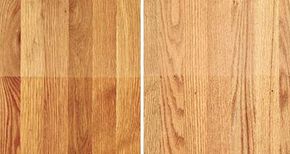Wood Varieties
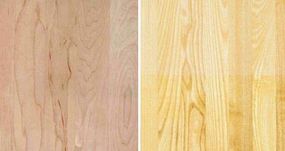
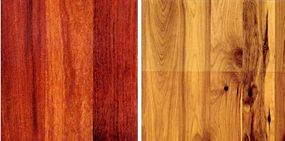
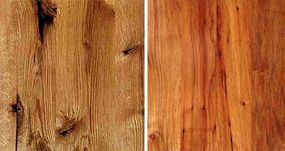
Another crucial decision to make when you decide to install a hardwood floor is what kind of wood to choose. There are issues of both substance and style that need to be taken into account. For instance, light wood may be more appropriate for a casual setting, while dark wood lends itself to more formal surroundings. There are no hard and fast rules, simply select what strikes your fancy and fits into your budget. Remember that different types of woods can vary greatly in price.
Obviously, there are too many species of wood to list in this article, but let's take a look at some common flooring choices:
Advertisement
- Red oak - Red oak is the most popular flooring option in the U.S. Reddish in color with a coarse grain, it's a stiff and dense wood that resists wear, but not as well as white oak.
- White oak - White oak is brown in color but can have a grayish cast. The grain is similar to red oak, with more burls and swirls. It is harder and more durable than red oak.
- Birch - Birch can range in color from light yellow to dark brownish red. It's softer than red oak, but is still a strong wood.
- Beech - Beech has a reddish brown color and a very consistent grain. It is quite durable and has excellent shock resistance.
- Pine - Pine is a yellowish brown color and contains a lot of swirls and knots. It has a natural resistance to insects and is about as hard as red oak.
- Cherry - Cherry wood is a light brown color. Because it's a soft wood, cherry isn't often used for a whole floor. Instead, it makes an excellent decorative or accent wood.
- Douglas fir - Douglas fir is a yellowish tan color. This wood is about half as soft as red oak and can dent easily. It is only appropriate in certain flooring situations.
When pricing the different flooring options, it is important to remember that flooring is priced by the square foot. It's a good idea to get your measurements first. Once you know the square footage of the area to be covered, you'll be able to estimate the cost. On the less expensive end, you can figure that oak will run you about $2 a square foot. Woods such as birch and beech can run much higher per square foot. Though exotic and specialty woods can cost a great deal, you don't have to spend a lot of money to get a new floor. After all, parquet floors can be as inexpensive as 99 cents per square foot.
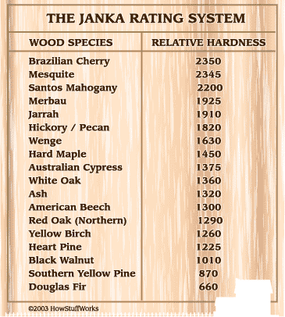
As you are deciding what variety of wood to use, you might want to consider the relative hardness of the wood. The table presented below shows a relative hardness rating for several different species of wood used in hardwood flooring. The relative hardness is based on the Janka Rating system, which measures the force required to drive a .444-inch steel ball into the wood, so that half the diameter of the steel ball is embedded. The higher the number, the harder the species of wood.
Another issue in regard to the wood you choose is the grading of the wood. Grading is a system created by The Wood Flooring Manufacturers Association (NOFMA) to describe the appearance of hardwood floors. The grades take into account things like color, grain and markings. The best grades of wood are clear and select. These woods have fewer markings and are more consistent in appearance than the common grades, which may have a variety of markings.
Once you've selected the type of flooring and the variety of wood you want to use, it's time to consider the finish.
